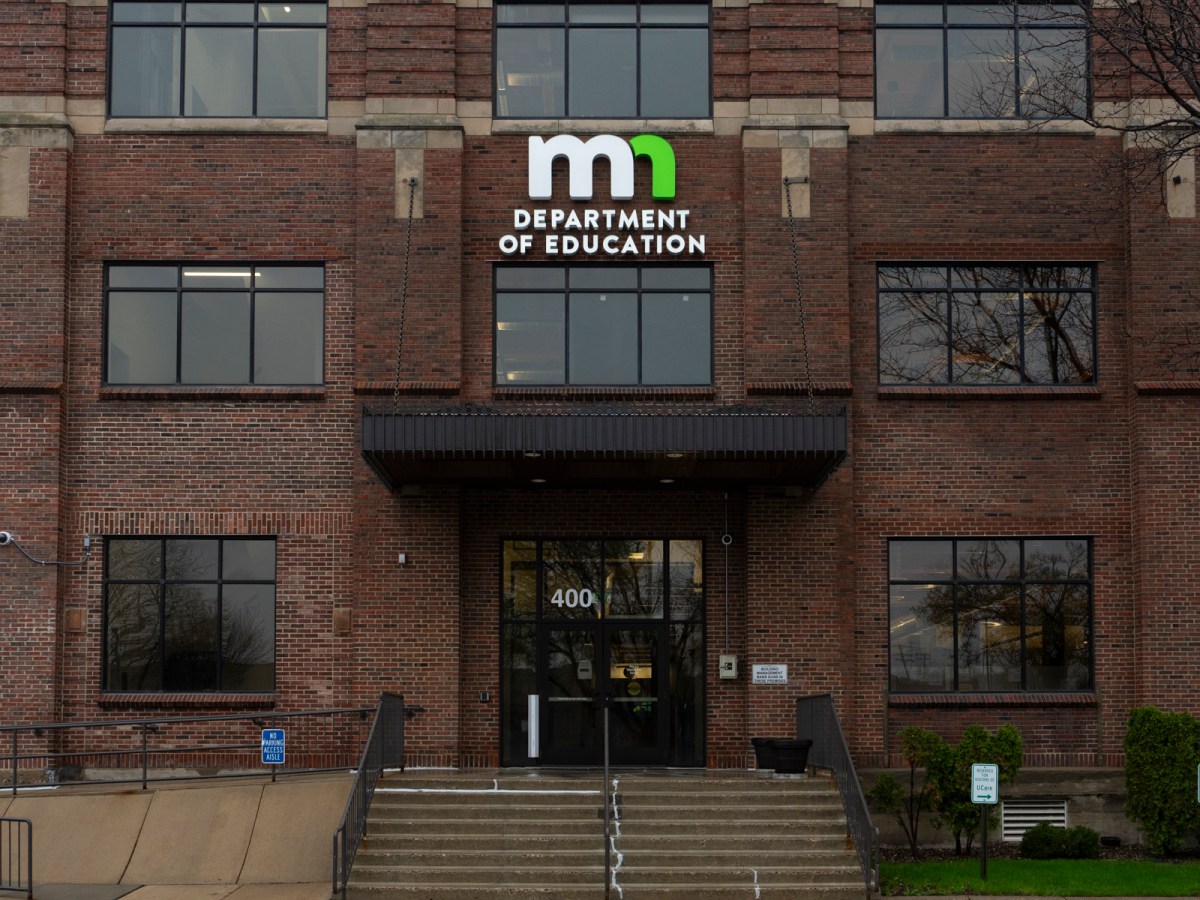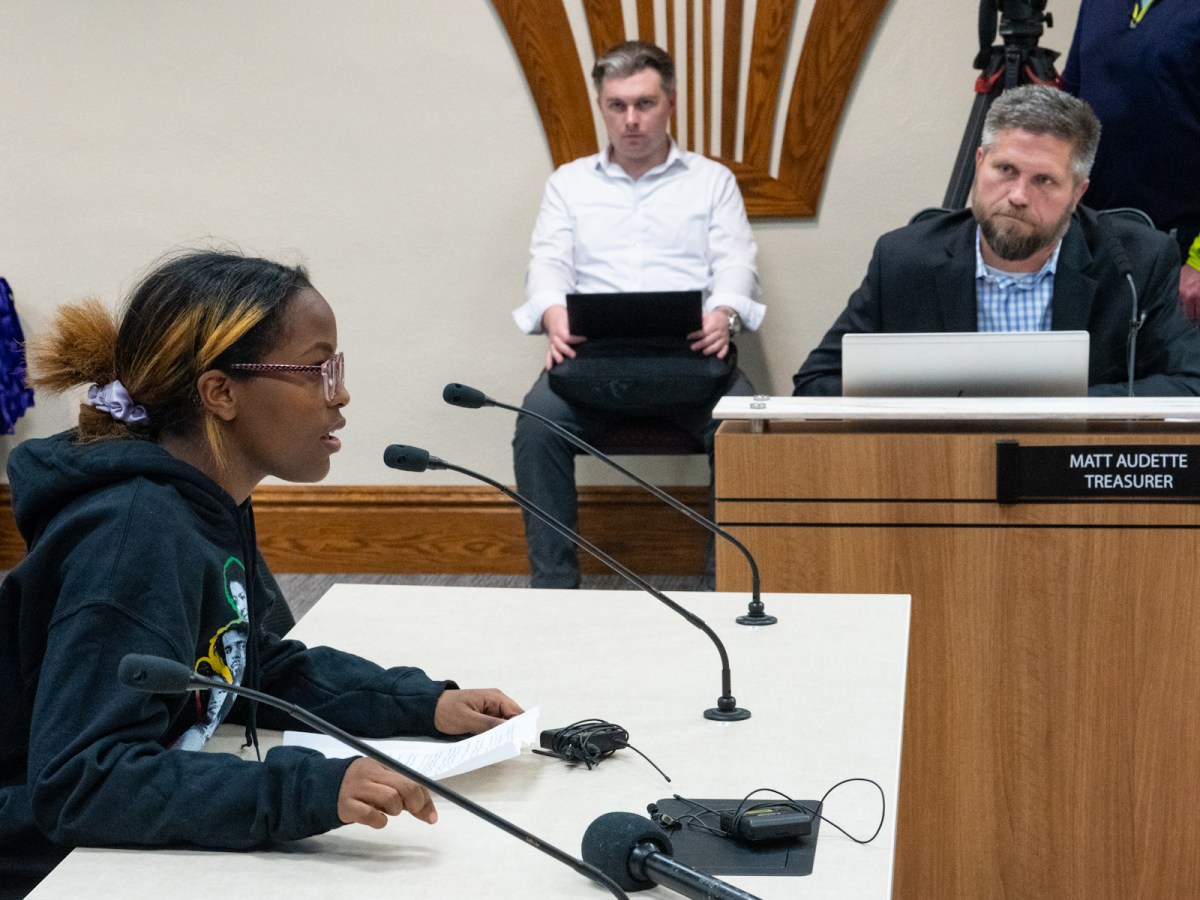The St. Paul Federation of Educators, representing 3,700 teachers, educational assistants, and licensed school staff, has voted to authorize a strike, the union said late Thursday night.
Two-thirds of the union’s educators cast a ballot on Thursday; of that number, 92% voted to authorize a strike, the union said.
The move marks the fourth consecutive strike vote for St. Paul educators, whose contracts are negotiated every two years. St. Paul teachers last went on strike in March 2020, closing schools for four days right before the COVID-19 shutdowns. In 2018 and 2022, the union and district settled a contract before a strike; in 2016, the union called for a strike vote, but settled a contract the night before the scheduled vote.
“It often feels like the district doesn’t come to the table really ready to dig into proposals until our members vote to strike,” Erica Schatzlein, an English language teacher at Nokomis Montessori Magnet School and the union’s lead negotiator, said in a Wednesday interview. “That’s unfortunate. But we will take the steps necessary to win a fair contract, and if the district is not acting until we vote to strike, then we will vote to strike.”
In a Friday morning statement, the district said that it believed a strike was unnecessary and stressed its hopes of reaching a resolution before a strike. It added that despite new state funding, the district was facing a budget shortfall of more than $100 million.
“It is essential that we settle contracts that allow all of our employees to have the support they need to serve our students and families, while ensuring that SPPS has a balanced budget this year and into the future,” said Pat Pratt-Cook, the executive chief of human resources and lead negotiator for St. Paul Public Schools, in a statement.
The vote to authorize a strike does not necessarily mean a strike will occur. The union would first need to set a date and provide 10 days’ notice to the district. The district and union have been in mediation since January 24. Under state law, an educator strike can begin no sooner than 40 days after the start of mediation. That timeline means that St. Paul educators could strike in early March. Minneapolis educators, who staged a three-week strike in 2022, have also filed for mediation. But their first mediation session is scheduled for February 29, which means the soonest they could strike would be April.
A steady stream of educators, many wearing union hats and stickers, filed in and out of the Carpenters Local 322 hall to cast ballots Thursday afternoon. “Déjà vu,” one educator said, a nod to the frequency of recent strike votes.
At least one educator did not seem pleased. “I’m so sick of this,” she complained, leaving the union hall. “Every two years.”
Outside the union hall Thursday, SPFE President Leah VanDassor said that in mediation sessions the union and district were making “good progress” on some issues. But she said that progress did not extend to some of the key issues still on the table, including wages and benefits.

Health insurance costs lead to net pay cuts
Though St. Paul contract negotiations in previous years have often focused on classroom size and mental health support for students, this year educators are concerned about their own wages and health insurance benefits, Schatzlein said.
“We’re seeing inflation go so high that in January, many of our educators actually saw their paychecks go down because our health insurance costs went up,” Schatzlein said. According to Bureau of Labor Statistics data, the cost of living in the Twin Cities metro area has risen by nearly 8 percent in the two years since educators last negotiated their contracts.
Shanaz Padamsee, an interventionist at the St. Paul district’s online school, said that since 2018, her family health insurance contribution has increased by $278 per bimonthly pay period. That means that despite annual cost-of-living raises, she has seen a net decrease in take-home pay—even as inflation has risen.
Though state data show that St. Paul teachers are among the highest paid in the state, Padamsee said that statistic conceals the reality she and other educators are facing.
Shantella Barnes, an educational assistant at Journeys Secondary School and the union’s vice president, said that she was accustomed to January’s paychecks being lower than December’s, because the district begins paycheck deductions for summer insurance in January. This year, though, she said the cut was particularly steep.
“I can’t pay my mortgage if I’m going to get $500 a pay period,” she said.
One district health insurance proposal would have a drastic adverse effect on married couples who work in the district, Schatzlein said. Currently, one spouse can carry the other on the family plan. The other can use their health insurance stipend to purchase other kinds of insurance, like vision or short-term disability; any leftover amount gets added to their take-home pay, where they can use it to help pay for family health costs.
But, she said, the district has told educators that starting in 2025, the spouse who does not hold the family plan will no longer receive a health insurance stipend at all. That change could cost those families hundreds of dollars a month, she said.
The district’s budget shortfall
Despite a historic increase to school funding at the state Legislature last year, St. Paul Public Schools, like districts around the country, is bracing for the end of federal COVID relief funding in September 2024. The district is currently projecting a $107.7 million budget shortfall for the 2024-2025 school year, according to a February 8 update to its website.
“This shortfall will impact many areas of our district operations, including how much money we are able to invest in employee wages and benefits, which account for 80% of our expenses as a school district,” the district wrote on its website.
St. Paul Public Schools’ latest wage proposals include a 2 to 3% increase for educators in the first year of the contract, followed by a 1.75% increase in the second year. Under the district’s proposal, educators with more than 20 years of service would also receive an annual $1,300 longevity stipend.
Erica Wacker, the district’s communications director, acknowledged that health care costs are rising for many Americans. She also noted that in 2021, the union opted out of the district’s health care plan in favor of a different plan. The district pays a set amount toward employee premiums, but educators said that health care cost increases have far outpaced the district’s increases in contributions.
The district has proposed increasing its health insurance contribution by $25 per month for individuals and $175 per month for families in the first year of the contract, with an additional $25 monthly for individuals and $75 for families in the contract’s second year.
“SPPS and SPFE continue to discuss this issue at the bargaining table,” Wacker said.
Student needs: addiction counselors and restorative practices
The union’s other major concerns include licensed alcohol and drug counselors and restorative justice practices.
Schatzlein said the union also had serious concerns about the district’s decision to decline bargaining about restorative justice practices.
“We expect that that means the end of restorative practices in our schools,” she said.
When her school was a pilot site for restorative practices, Schatzlein said, teachers received training to help students process their feelings and work out problems with classmates. Her school has seen high turnover since the pilot funding ended, which means that many new staff have not received this training.
“If we don’t start to build those skills in elementary school, it becomes a much more dangerous conflict in high school,” Schatzlein said. She pointed to last year’s shooting of a Central High School student outside the Jimmy Lee Recreation Center, and the fatal stabbing of 15-year-old Devin Scott at Harding High School last February.
“Those are things that we think restorative practices can help and interrupt,” she said. “But it’s not a three-year pilot site. It takes more than that.”
Wacker said that the current agreement between the district and union on restorative practices expires in June 2025.
“SPPS remains committed to this body of work and will continue to partner with SPFE to evaluate the program and find ways to support its potential to positively impact our learning environments,” she said.
Schatzlein also said the union is calling for the district to create a pathway for more licensed alcohol and drug counselors. She said while in previous negotiation cycles, the union had won an increase to the numbers of school counselors and social workers, educators were now seeing a need for chemical health counselors as well. The rise in fentanyl and opioid use nationally was affecting students and their families, she said; in some cases, students and educators had seen overdoses at schools.
The district has employees who would like to go back to school to become drug and alcohol counselors, Schatzlein said, but cannot afford to take a year off for the internship that the degree requires. So the union proposed a “grow-your-own” program where district staff training to become chemical health counselors could do their internships at St. Paul Public Schools.
“For us, that was creative problem-solving,” Schatzlein said. “The district has not agreed to go down that path with us.”
Barnes, who works with students with emotional and behavioral disorders at Journeys, said that she had not seen her site benefit from the mental health support gains in previous contracts.
In one instance, she said, she called a social worker when a student threatened to commit suicide. But the social worker was dealing with another crisis and not available to step in.
“You don’t have that support to help you,” she said. “It’s like, hello, we need some help right here.”
Wacker said that the district’s current ratios of counselors and social workers to students were among the best in the state. She said the district agreed with the union about the need for more chemical health services, and had started partnerships with community groups like the Wilder Foundation to provide these services. The union’s current proposal for additional mental health support, including more counselors, nurses, and social workers, would cost the district an additional $25.8 million in its first year, she said.
Michael Houston, a Harding math teacher and the 2023 Minnesota Teacher of the Year, said that a 2% raise for teachers would be easier to swallow if not for the district’s recent 6% pay raise to administrators. He described the district’s offers as a “slap in the face.”
“As a teacher, I teach my kids to advocate for themselves,” he said. “So now we’re trying to advocate for ourselves.”






